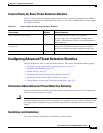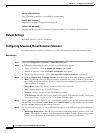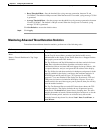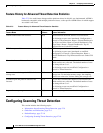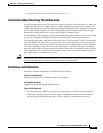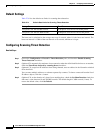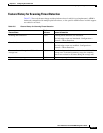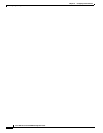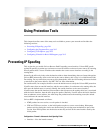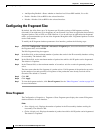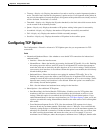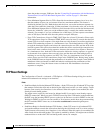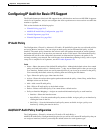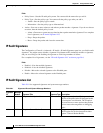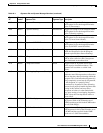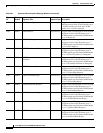
CHAPTER
28-1
Cisco ASA Series Firewall ASDM Configuration Guide
28
Using Protection Tools
This chapter describes some of the many tools available to protect your network and includes the
following sections:
• Preventing IP Spoofing, page 28-1
• Configuring the Fragment Size, page 28-2
• Configuring TCP Options, page 28-3
• Configuring IP Audit for Basic IPS Support, page 28-5
Preventing IP Spoofing
This section lets you enable Unicast Reverse Path Forwarding on an interface. Unicast RPF guards
against IP spoofing (a packet uses an incorrect source IP address to obscure its true source) by ensuring
that all packets have a source IP address that matches the correct source interface according to the
routing table.
Normally, the ASA only looks at the destination address when determining where to forward the packet.
Unicast RPF instructs the ASA to also look at the source address; this is why it is called Reverse Path
Forwarding. For any traffic that you want to allow through the ASA, the ASA routing table must include
a route back to the source address. See RFC 2267 for more information.
For outside traffic, for example, the ASA can use the default route to satisfy the Unicast RPF protection.
If traffic enters from an outside interface, and the source address is not known to the routing table, the
ASA uses the default route to correctly identify the outside interface as the source interface.
If traffic enters the outside interface from an address that is known to the routing table, but is associated
with the inside interface, then the ASA drops the packet. Similarly, if traffic enters the inside interface
from an unknown source address, the ASA drops the packet because the matching route (the default
route) indicates the outside interface.
Unicast RPF is implemented as follows:
• ICMP packets have no session, so each packet is checked.
• UDP and TCP have sessions, so the initial packet requires a reverse route lookup. Subsequent
packets arriving during the session are checked using an existing state maintained as part of the
session. Non-initial packets are checked to ensure they arrived on the same interface used by the
initial packet.
Configuration > Firewall > Advanced > Anti-Spoofing Fields
• Interface—Lists the interface names.



